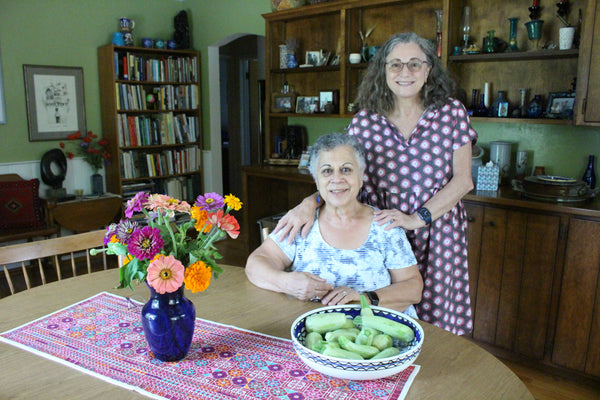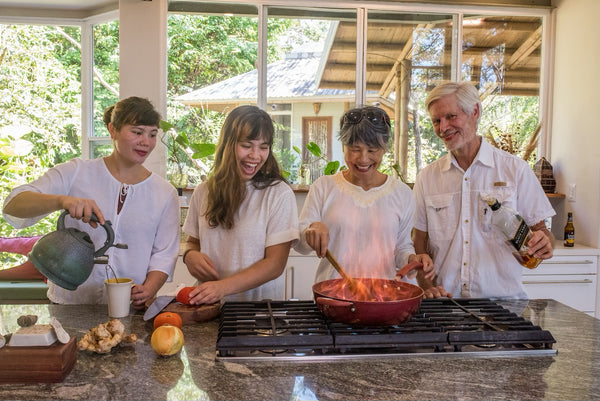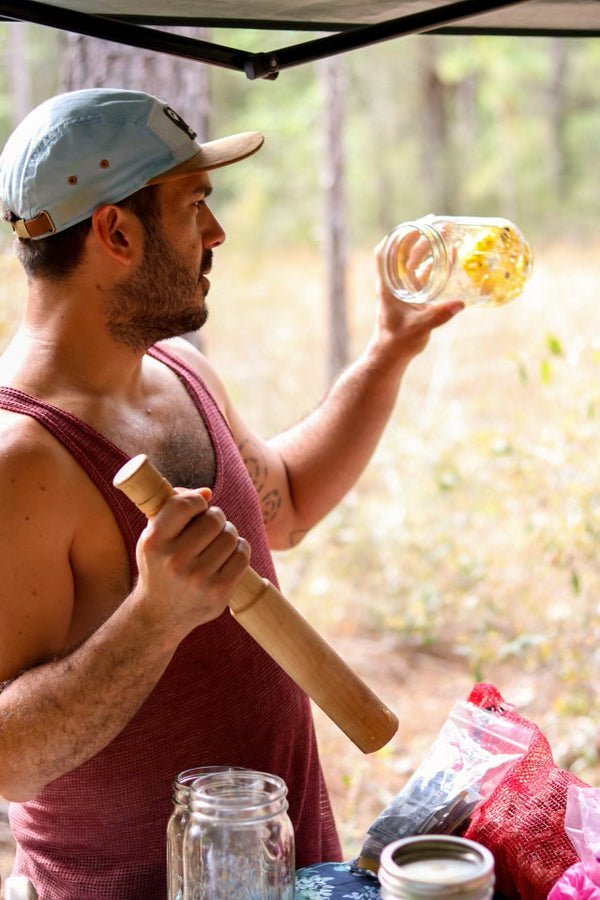As a kid growing up in Cuba, Charo’s favorite thing to do was roller skate. She lived in the city of Santa Clara, smack dab in the middle of the island. “Back then, roller skates weren’t like the roller skates we have today,” Charo told me, “they were metal attachments you had to strap on to your shoes. It was such a pain to put them on and take them off that when my mother called me in for dinner on Sunday evenings, I would roller skate straight into the dining room to eat dinner, then skate back out after I was finished.”
Although she wasn’t involved in the kitchen much growing up, Charo remembers her mother asking her every day, “what kinds of rice and beans do you want today?” It was such a staple for her; the meal that gave her the nourishment to skate, play, and learn growing up. Even after she left Cuba with her family in 1967 (when Charo was around 12 years old) to live in the States, her mother would continue cooking the different varieties of beans and rice until Charo moved out and began living on her own. To bring the flavors of home along with her, Charo learned to cook rice and beans the way her mother did, through a Cuban cookbook that her mother gave her when she left home. “That book has certainly shown its wear over the years,” laughs Charo. She’s now able to make beans and rice just the way her mother did so many years ago, and, just as her mother did for her, she continues to make rice and beans for her own children and grandchildren, passing down the foods and the flavors so important to her family through generations.

Pictured: Old fashioned roller skates.
Cuba, officially known as the Republic of Cuba, is the largest island located in the Northern Caribbean Sea surrounded by the islands of The Bahamas, Haiti, and Jamaica. Cuba was inhabited by indigenous people for over 5000 years until the Spanish colonized in the 15th century. Spanish colonization included settlement of the island by Spanish people, the subjugation of indigenous people, and enslavement of Africans. Cuba has a long and complex socio-political history (that we won’t get into here) that makes the island what it is today: a land in which a great variety of cultures and ethnicities create a distinctly Cuban fusion of flavors, traditions, and values.

Pictured: An old map of Cuba.
Some years ago, Charo’s grandfather created a family tree, which allowed her to discover that on her father’s side of the family, her descendants came from Spain to Cuba around 1740. Her mother’s family came from the Canary Islands to Cuba. So, although ancestrally, her family originates in Europe, she very much considers Cuba her home. However, in the late 1960s, her family moved to New Jersey due to the unstable political rule in Cuba at the time. It was difficult to get her family settled in the States, but “nowhere near as difficult as it is for immigrants to get documented nowadays,” Charo tells me. She didn’t want to leave Cuba (“my parents made me”).
Now, Charo lives in Ann Arbor. She doesn’t have a garden, but neither did her family when she was growing up. They lived in the city, where there was no real soil for them to cultivate. They had a tiled patio that connected their house to the neighbor’s, which opened up to the sky, but that was it. She remembers occasionally going to the country to visit her grandpa’s friends, who would grow mostly fruit trees, such as papayas and guayábanas. But that didn’t stop her mother from cooking the delicious foods that Charo so enthusiastically described to me, and it doesn’t stop Charo from cooking those same foods today.
Although black beans are the most popular bean used in Cuba, Charo also makes beans & rice dishes using red beans, white/navy beans, and garbanzos, just as her mother did when she was a kid. Accordingly, there are four different beans & rice variations that Charo makes regularly.

Pictured: Red, black, white/navy, and garbanzo beans.
When she cooks with black beans, Charo uses salt, pepper, cumin, oregano, bay leaf, and what she refers to as The Cuban Trilogy: onion, green peppers, and garlic. She adds a bit of vinegar to the dish while it cooks to cut the bitterness. For red beans, she’ll add salt, pepper, The Cuban Trilogy, tomatoes/tomato paste/tomato sauce, and occasionally potatoes, pumpkin, and, “Charo’s Twist” - a handful of arugula at the end. She says that the arugula has that earthy taste to it that she associates with red beans. When she cooks white/navy beans, she adds salt, pepper, The Trilogy, paprika (“it mimics the taste of chorizo, but if you’re vegetarian paprika is a great substitute”), and also occasionally potatoes. For the fourth and final variation, garbanzos, she’ll cook them much like navy beans, but also sometimes will add tomatoes. Her mom adds cabbage.
The rice is cooked quite simply, with water, a bit of oil, and a pinch of salt. Once the beans and rice are done, all that’s left is to scoop them together and enjoy a delicious, hearty, and nutritious Cuban masterpiece.
Charo is a wealth of knowledge when it comes to traditional Cuban foods. Another popular food for many Cubans is yucca (aka cassava root). The traditional way of preparing this root is to simply boil it. The secret’s in the sauce; oil, lime juice, garlic, and salt that’s heated till smoking. You’ll pour this tasty treat on top of the yucca to flavor it. Charo also uses yucca in soup, or will fry it in little strips the same way you’d make french fries. Plantains are also a popular and common fruit in Cuba, and I can say from personal experience that they are undeniably delicious however you cook them - boiled, fried, made into chips, fried into tostones, caramelized, sweet or salty - you can’t go wrong. There’s also malanga (aka taro) which you can eat like mashed potatoes. “It's a lot creamier than potatoes though,” Charo added, “especially if you add milk.” Then there’s ñame (essentially, a really big yam) which is prepared similarly to yucca. Charo also said that cornmeal is another staple for her. You can boil it and it becomes a sort of porridge (similar to grits), which you can either put fried eggs on top of, or simply add sugar to it and it eats like oatmeal with brown sugar. Charo remembers making something called “atol” as a child - “When it was fresh corn season, they would grind the fresh corn and get the little skins off the kernels, and then you’d take that and add milk, sugar, and a chunk of cheese to it.” She pauses to laugh when she spots my dropped jaw. “That sounds like heaven,” I sum up.
I could go on for hours recounting all the delicious and nourishing foods I learned about from Charo. But then, I suppose that that’s an important point to recognize here - that there is virtually no end to the wealth of ancestral knowledge stored in the memories of our descendents, both in those who are living and in those who have passed. In every individual we meet, there are countless stories to be told, traditions and ancestral knowledge, yes, but also personal stories and experiences, twists that each person has contributed to their lineage. This creates a continuous stream of influences that over time, accumulate, and subtly either begin to change the way we see the world, or reinforce it.

Pictured: Charo and her grandchildren in the garden.
As we wrapped up our conversation, Charo excitedly told me she would have to send me a link to a video she’d just watched recently about Cuban food. While I watched it, I felt such nostalgia for Costa Rica, which I had visited several years ago as a student at the University of Michigan. The foods and general way of life, especially for those who live in the country as farmers, stirred something deep within me, and I could see many similarities between these two countries, but also distinct variations. Whether it’s the land we call home or the land we visit, it leaves an imprint on us. For Charo, seeing her country and its people through the lens of food and cooking was so healing to her, and I could see her eyes brighten as she talked about all the foods the people in this video explored and the adventures that they had. Though she doesn’t currently live in Cuba herself, the food traditions she carries with her help her to maintain her sense of wholeness, of family, and of home to this day.
By Grace Pernecky
For Charo’s “Four Variations on Cuban Beans & Rice,” recipes click here!




